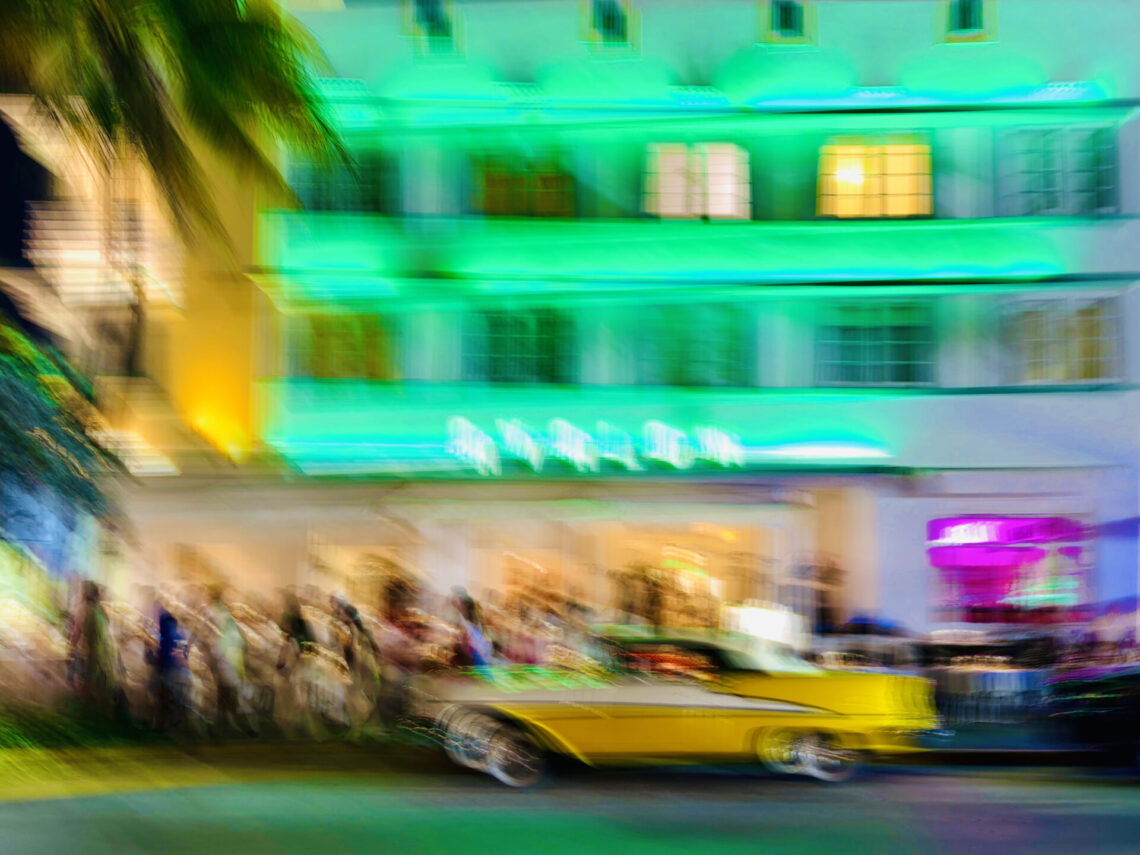
24 hours in Miami Beach – Celebrating 10 years of iPhone photography
24 hours in Miami Beach – Celebrating 10 years of iPhone photography
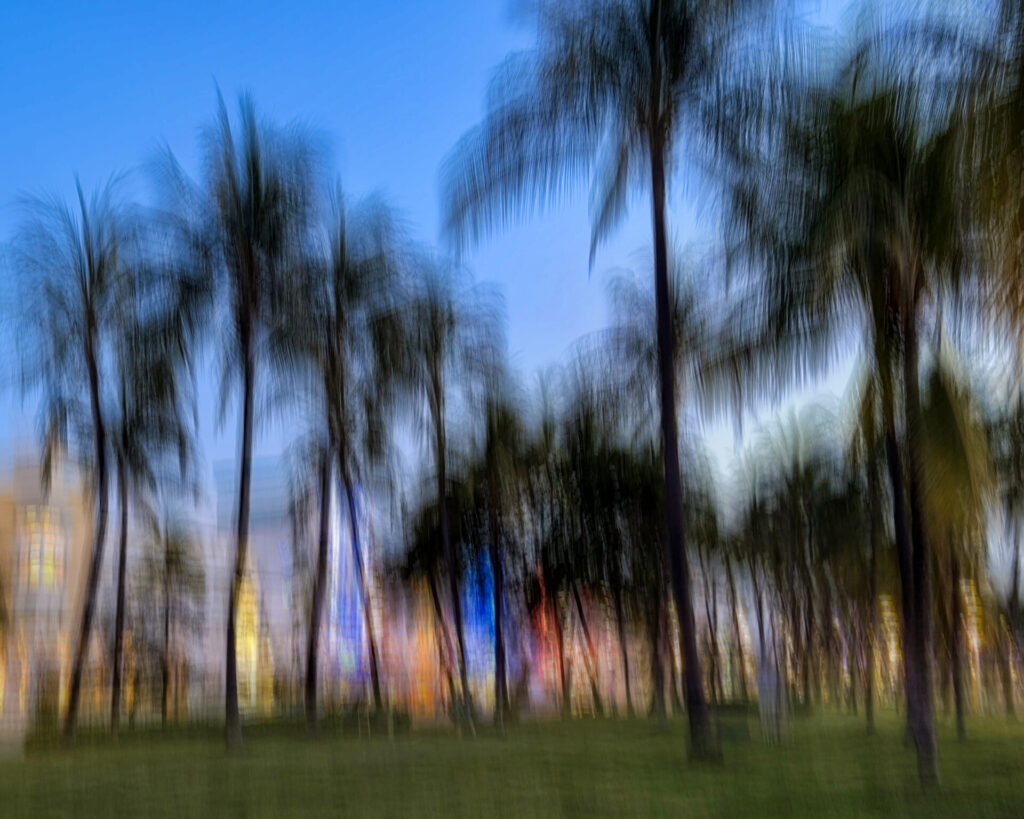
The bar proves to be a refreshing oasis, offering respite from the scorching afternoon sun that beats down on the beach and poolside. Jazz melodies fill the air, enhancing the throwback atmosphere meticulously crafted within. The cocktail of the month, an old-fashioned, proudly occupies a poster in a prominent spot, intensifying the sense of stepping back in time.
The barman, his carefree smile etched on his sun-kissed face, expertly pours my drink straight from the shaker. “First time in Miami Beach?” he casually inquires, a question he must have posed countless times to previous guests.
“No, I was here 25 years ago,” I reply, a hint of nostalgia lacing my voice.
He exhales playfully, a mischievous glint dancing in his eyes. “Welcome back, Sir. What the hell took you so long?”
Playful as his remark may be, it echoes the question that has lingered within me ever since I left behind the nerve-wracking lanes of Interstate 95. A surge of vaguely familiar excitement engulfed me as I navigated onto Collins Avenue, the radiant sunshine illuminating the pastel colours of the Art Deco buildings. In an instant, Miami Beach’s charm had transported me to a bygone era of glamour and style, evoking memories of iconic movie scenes and beloved TV shows.
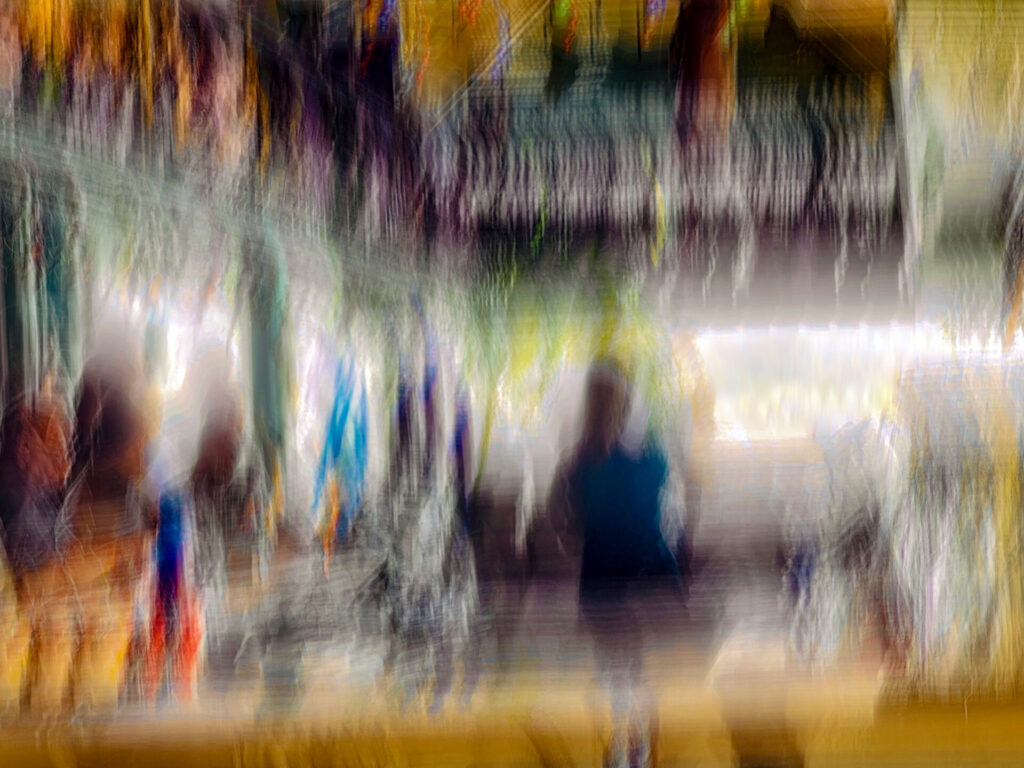
I’m no stranger to Florida, regularly visiting since the late 1980s. The last time I was in Miami, the city was still reeling with the shock of the brutal slaying of fashion designer Gianni Versace on the steps of his Miami Beach mansion. Now transformed into a luxury hotel and restaurant, Villa Casa Casuarina, has become a magnet for admirers and tourists eager to capture photos and selfies in front of the opulent palace. The site stands as a testament to the enduring legacy of Gianni Versace and a vivid symbol of Miami Beach’s indomitable spirit of evolving and reinventing itself with each passing era. The city is a place where past and present intertwine, where historical significance merges with contemporary allure.
During the years that have passed since my previous visit, my preference has shifted towards exploring the intimate charm of beach towns along the Gulf Coast and throughout the Keys. My camera lens has focused on the wildlife, beach culture, and relaxed way of life that the Sunshine State abundantly offers. During my recent road trip though, I couldn’t resist the irresistible allure that pulled me back towards the vibrant energy, iconic architecture, and tangible excitement of Miami Beach. It became clear to me that this was the perfect destination to commemorate 10 years of iPhone photography and to capture it through my preferred style of photography.
The iPhone has been my faithful companion on countless urban adventures, introducing me to the realm of street photography. Its accessibility, convenience, and discreet nature have empowered me to explore the aesthetic allure of cityscapes. Throughout the past decade, my photographic style has evolved, transforming from faithful documentation of subjects and scenes to a conduit for creative expression. No longer bound by the pursuit of technical precision and flawlessness, I have embraced the emergence of a chaotic beauty in my work — a fusion of grit and grace. By purposefully moving the camera during longer exposures, I revel in the liberating freedom of creative expression. This intentional camera movement is commonly referred to as ICM photography.
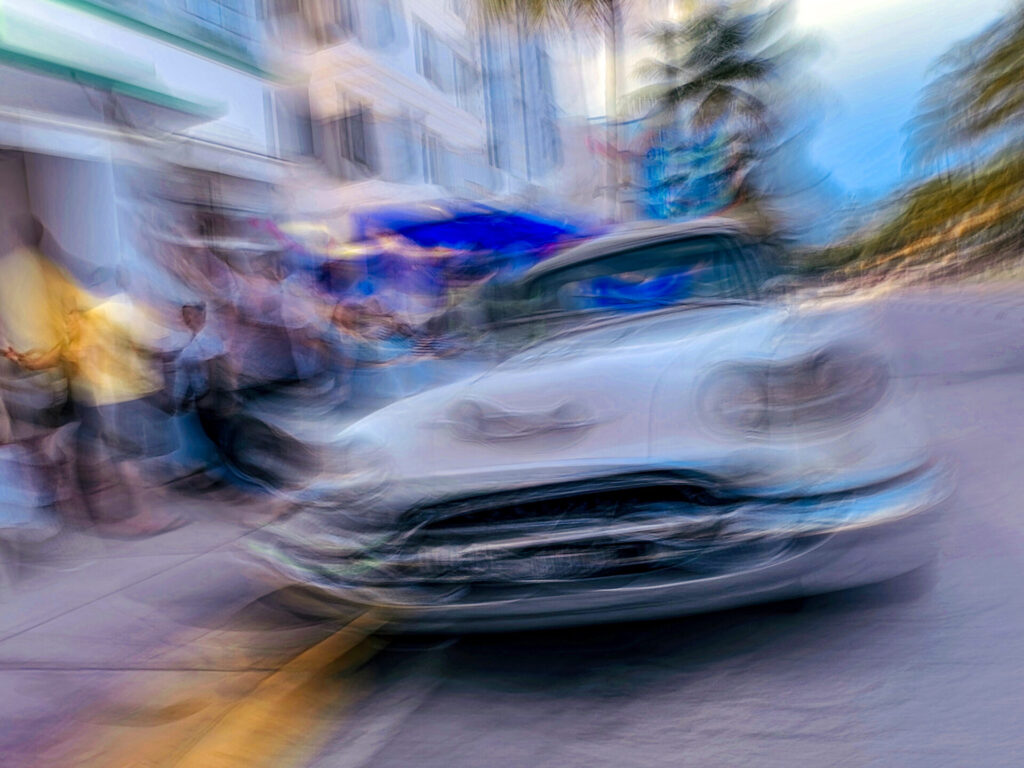
My objective was to capture the essence of Miami Beach, encompassing its distinctive architecture, beach culture, vibrant nightlife, and infectious energy. It was a vast canvas to explore within a limited timeframe. This project would align perfectly with my overarching photographic vision, which holds the belief that photography can transcend traditional documentation and uncover the unseen facets of a subject. Through my Urban Echoes street photography I strive to challenge conventional perceptions of city life and present viewers with an alternative perspective. I aim to encapsulate the ephemeral moments of everyday life and transform them into visual poetry, inviting viewers to experience urban landscapes in a fresh and alternative way.
With this clear goal in mind, I made a deliberate choice to centre my photography around iconic Ocean Drive—a bustling boulevard that stretches along Miami Beach’s eastern coast. Renowned as one of the city’s most celebrated and cherished destinations, Ocean Drive runs parallel to the Atlantic Ocean, offering breathtaking views of the beach and the glistening waters. It serves as a constant reminder of the awe-inspiring natural beauty that envelops Miami.
Over the years, my preferred choice for creating long-exposure images has been SlowShutter Cam. Recently, I’ve also started using Reeflex Pro Camera and have incorporated both apps into this project. Although each app has slight differences, they ultimately produce similar results.
Both SlowShutter Cam and Reeflex offer a live preview, allowing real-time adjustments to camera settings, composition, lighting, and options for motion blur and light trails. Both apps have user-friendly interfaces, making it easy to adjust the exposure time. Additionally, real-time long exposure blends can be observed while capturing the shot.
In SlowShutter Cam, I have developed a technique for capturing multiple exposures during capture. Although I don’t use this technique in every shot, it often leads to fascinating outcomes. Another advantage of SlowShutter Cam is its ability to allow exposure durations of less than 1 second, which Reeflex lacks. On the other hand, Reeflex tends to produce smoother blends in bright lighting conditions, especially on my iPhone 14 Pro. I frequently capture similar scenes using both apps and review them later for comparison.
Having a preconceived shooting plan in mind works best for me when I am in a location and intend to capture multiple images. This ensures that I don’t forget or miss certain shots and also ensures optimum time management. For this project I intend to begin photographing in the late afternoon as the angle of the sun allows for a more even distribution of light across the scene, making it easier to capture details in both highlights and shadows. Additionally, the heat of the day begins to dissipate.
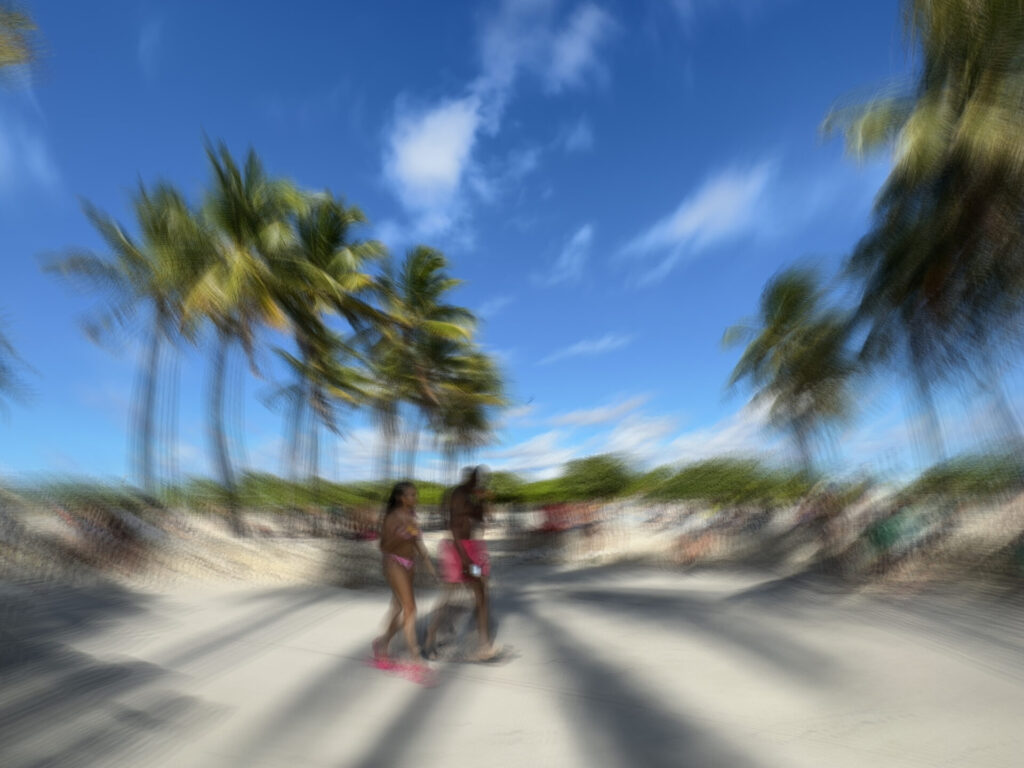
My first subject: iconic palm trees against pastel-coloured Art Deco buildings. Additionally, this also allows photographing people along the palm-lined promenade, known as Lummus Park. The lengthened shadows and the soft quality of light create a perfect canvas for artistic creativity. I explore patterns, silhouettes, and the interplay of light and shadow. It’s a delightful dance of elements, where nature and architecture harmonise, and a perfect start to my project.
While composition remains a crucial aspect, ICM invites an element of unpredictability that adds a sense of excitement and wonder to the process. I strive to move in harmony with the primary contours or motion of the subject, accentuating the features. Additionally, the prevailing lighting conditions and the velocity of a moving subject greatly influence my camera settings and even determine the specific app I choose for each situation.
The speed of movement during an exposure greatly affects the outcome of an image. Faster movement tends to result in a more blurred capture, whilst deliberate and slower movement contributes to a solid and well-defined appearance in the resulting image. In this project, I meticulously composed numerous images to retain a sense of reality that allows viewers to understand the unfolding story within each frame. A technique that is apparent in many of my urban images. This entails either working with shorter time frames, sometimes less than 1 second, or minimal movement over as much as 3 seconds. Inevitably with this style of photography, there is always an element of trial and error.
However, no matter how much control I exert over the management of the image, each ICM result is inherently unique and unrepeatable. The combination of movement, speed, direction, and exposure duration produces an unpredictable outcome, leading to one-of-a-kind compositions. This is where the true magic of ICM resides for me and I’ve learned to embrace the element of spontaneity that sets it apart from other forms of photography.
Inevitably, ICM photography is notorious for its high rejection rate, primarily because of the unpredictable nature of the technique. However, over the years, I’ve learned not to let myself become disheartened by shots that don’t quite work out. I often will take alternative shots of the same scene with different exposure times and I’ll mix my camera movements. I believe in hedging bets!
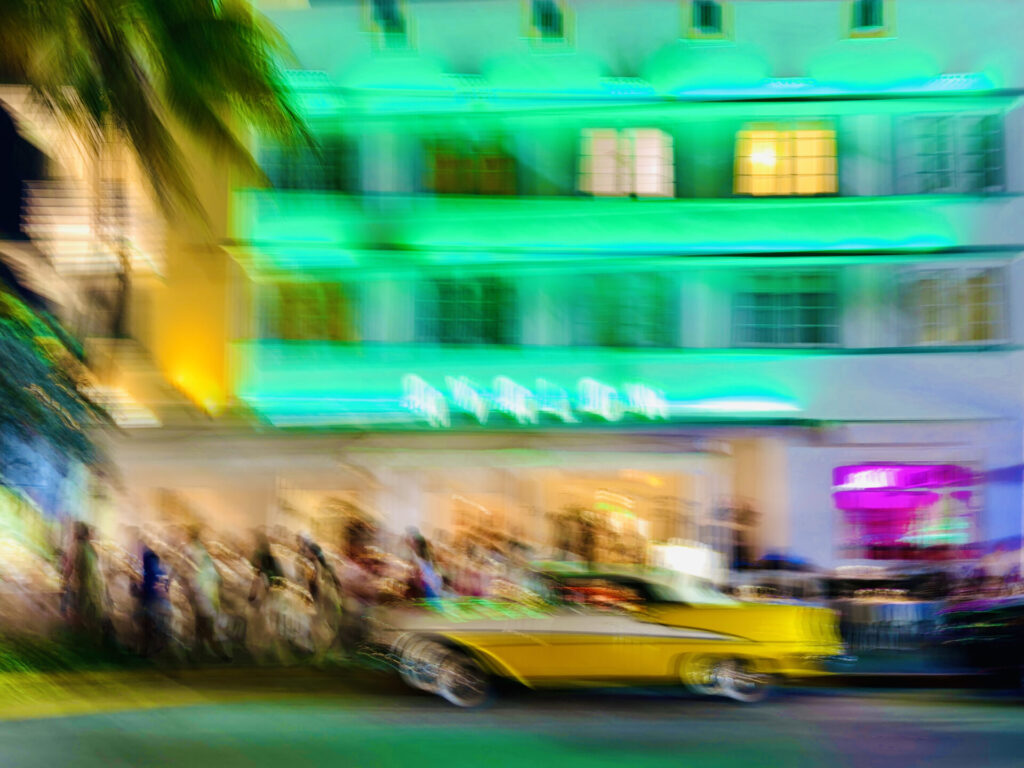
As the sun dips beneath the horizon, It is time to focus my attention on the art deco hotels that line the street. Ocean Drive transforms into a nightly spectacle, undergoing a breathtaking metamorphosis as neon lights engulf the buildings in vivid luminescence. Exploring the bustling street, I immerse myself in a world of angles and perspectives, determined to showcase the intricate designs and distinctive features of these illuminated landmarks. With every step I take, I seek out the perfect vantage point, aiming to capture the essence of their beauty and the fluidity of passers-by. The possibilities are endless, and I am in awe of the artistic potential that lies before me. I find myself in a dance of discovery, adjusting my position, fine-tuning my settings, and exploring the interplay between light, shadow, and movement. There is a sense of liberation in this creative pursuit. I am free to explore and experiment, pushing the boundaries of traditional composition.
The air crackles with an exhilarating fusion of salsa, jazz, blues, and hip-hop classics, infusing the streets with an infectious rhythm. The pavement teems with vibrant crowds, irresistibly drawn to the magnetic charm of bars, shows, clubs, and enticing eateries. Amid this vibrant tapestry, the traffic intensifies, revealing a dazzling spectacle of elegant automobiles, each vying for attention and evoking envy in the onlookers. Within this dynamic mix, sleek and lavish cars exude an unmistakable aura of sophistication, alongside meticulously preserved vintage classics that evoke a sense of nostalgia for bygone eras, and nimble, polished roadsters. Engines roar with power, while in-car stereos boom, showcasing eye-catching customisations and mesmerising paintwork that leaves heads turning at every corner.
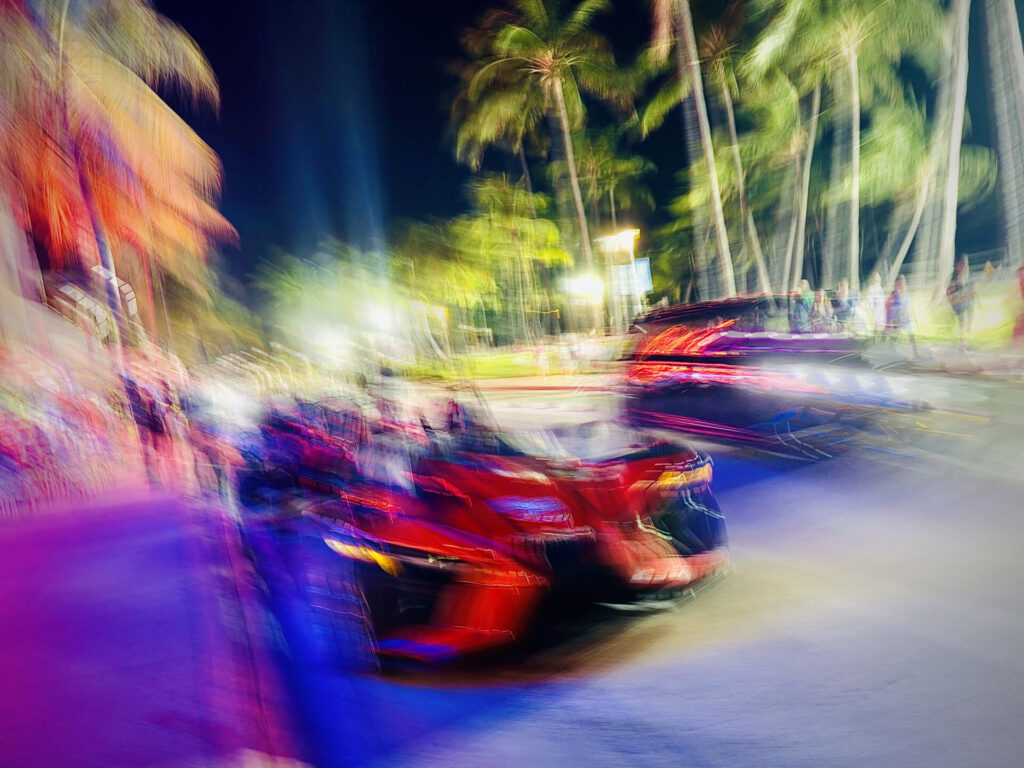
Miami Beach after dark is a cultural fusion of sights and sounds where life, music, architecture, and extravagance come together in perfect harmony. It’s a dream come true for any street photographer seeking excitement and inspiration!
They say Miami Beach never sleeps, but I’m going to have to. Time has passed so quickly and it’s almost tomorrow without me realising. I need an early start if I am to keep to my shooting plan for the next day’s photography, I retreat to my hotel, even though the nocturnal revelry raged on, unabated. I sank into a plush pillow, eventually lulled to sleep by the distant heartbeat of thumping bass lines that coursed through my consciousness.
The alarm clock’s relentless chime shatters the stillness, pulling me from my slumber at an uncomfortable 5:15 am. Without delay, I leap into a brisk shower, revitalising myself for the day ahead. I hit the streets, a full hour before the sun’s ascent. The city has finally succumbed to slumber, and a tranquil hush envelops the once vibrant boulevards. Most establishments shuttered, their doors locked, yet the neon signs persistently glow, offering more opportunities for capturing the essence of the hotels.
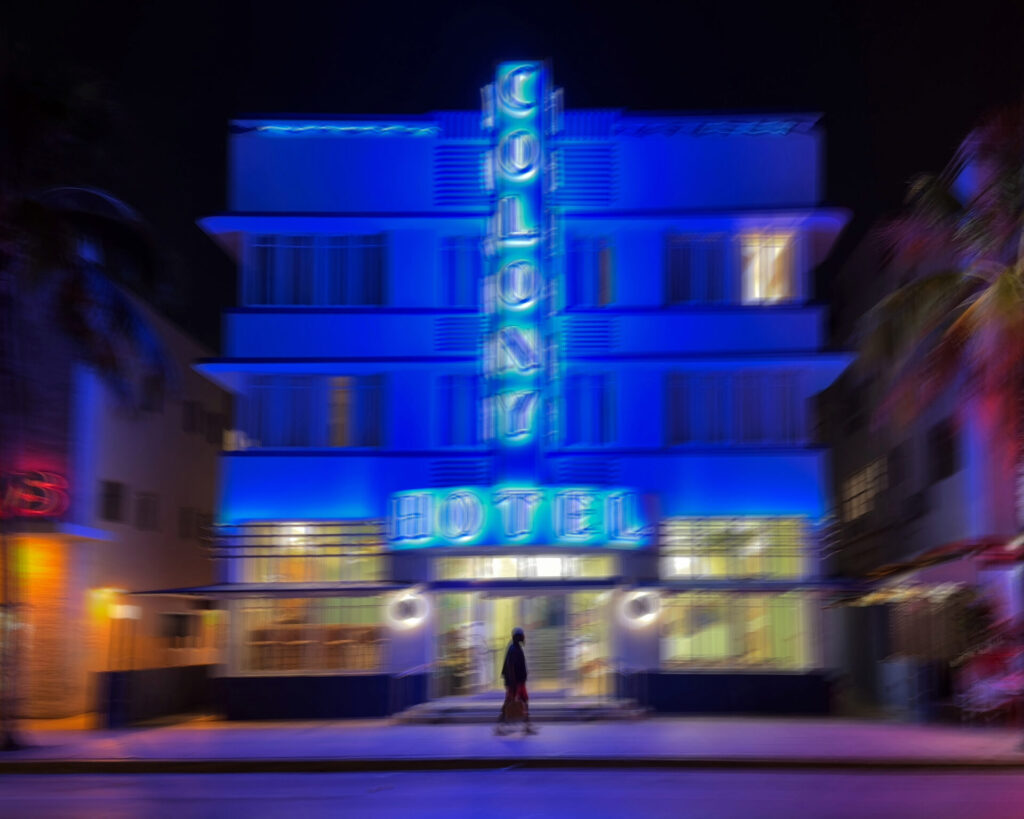
The streets, at this early hour, are an eclectic mix of individuals. The remnants of the previous evening’s revelry stroll by, their attire exuding an air of faded glamour, a testament to a night spent in the depths of late-night clubs. A few weary souls seek solace on park benches, their faces etched with the hardships of life. As I traversed the deserted thoroughfares, anticipation built, leading me to the edge of the pre-dawn beach. Already the sky was getting lighter and birdsong filled the air.
To my surprise, a growing number of people had already claimed their spots on the beach, ready to greet the dawning of a new day. Their presence dotted the sandy expanse, an assembly of early risers and late-night stay-outs seeking solace and connection with the rising sun.
Dotted along the beach at regular intervals stand the lifeguard towers of Miami Beach. Each tower, a unique and colourful designed structure, shoreline sentinels that stand as guardians, bridging the gap between land and sea, tirelessly ensuring the safety of swimmers and offering assistance whenever needed.
But their significance extends far beyond practicality. The lifeguard towers are essential to my storytelling, just as vital as the shots I captured of the iconic art deco buildings. As I integrate these lifeguard towers into my project, I recognise their powerful role in enhancing the visual allure of Miami Beach, the embodiment of the carefree beach lifestyle, evoking a profound sense of joy and community.
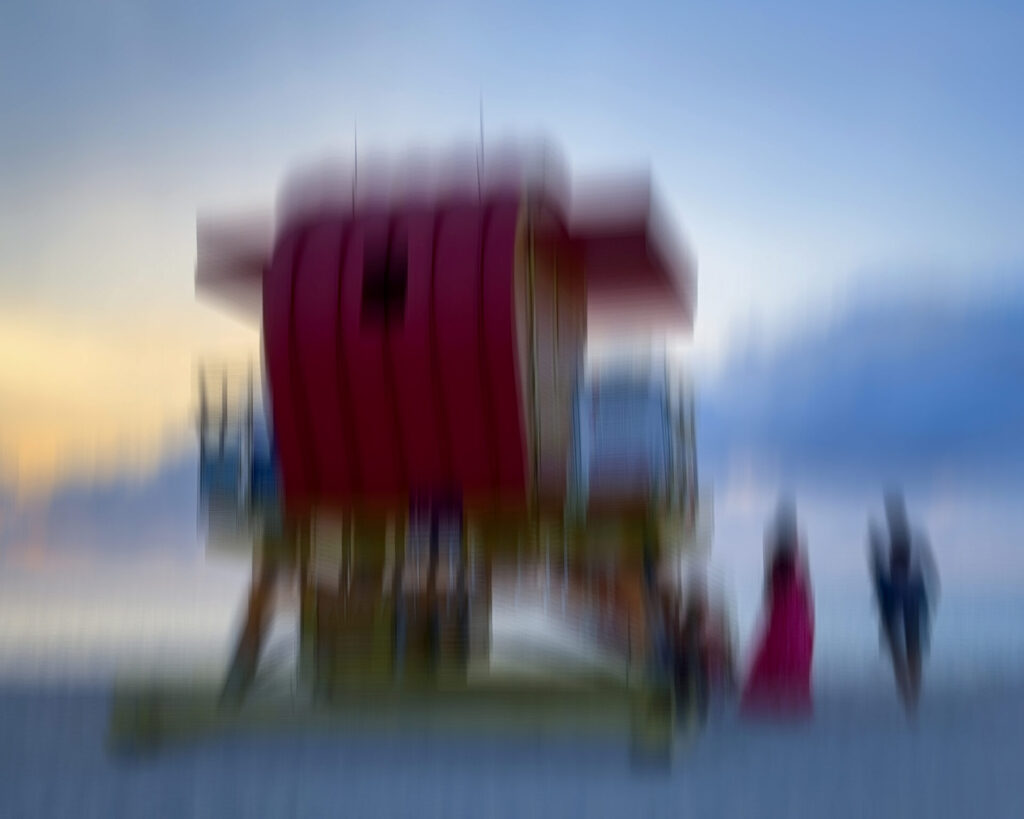
A collection of my Miami Beach images can be found on Blurb books.
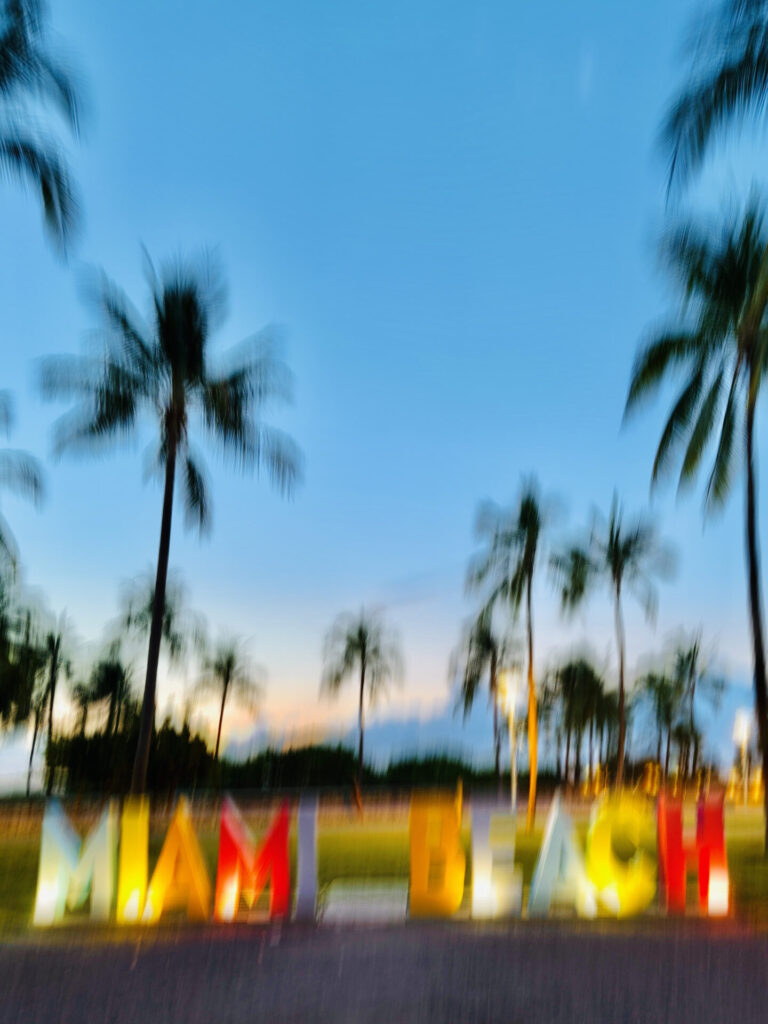
About Adrian McGarry
Adrian McGarry is a UK-based, creative photographer and digital artist. With over a decade of experience in iPhone photography, he is a respected mobile photography consultant and workshop leader. He is a popular keynote speaker at camera club nights, corporate events and photographic conferences. He holds an ARPS distinction from The Royal Photographic Society in their Visual Arts category.
www.adrianmcgarry.com
www.instagram.com/adrianmcgarry
www.facebook.com/adrianmcgarry.shotoniphone
Please support us
TheAppWhisperer has always had a dual mission: to promote the most talented mobile artists of the day and to support ambitious, inquisitive viewers the world over. As the years pass TheAppWhisperer has gained readers and viewers and found new venues for that exchange.
All this work thrives with the support of our community.
Please consider donating to TheAppWhisperer as this New Year commences because your support helps protect our independence and we can keep delivering the promotion of mobile artists that’s open for everyone around the world. Every contribution, however big or small, is so valuable for our future.

